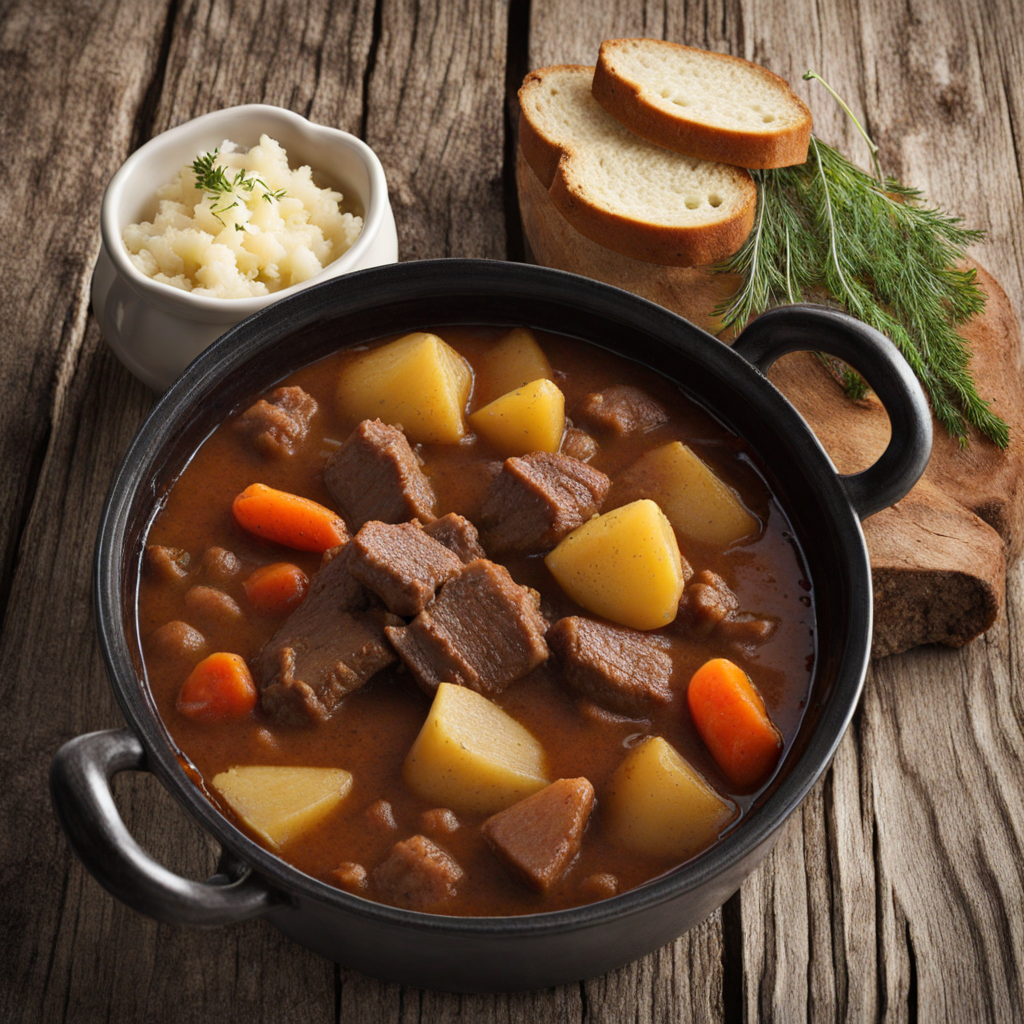Smoked Fish
Smoked fish in Estonia is a culinary delight that showcases the country's rich maritime heritage and traditional preservation methods. The process typically involves curing fresh fish, such as herring or salmon, with salt and sometimes spices, before exposing it to fragrant wood smoke. This not only enhances the fish's flavor but also extends its shelf life, a practice that dates back centuries. The result is a beautifully textured fillet that boasts a smoky aroma, deepening the fish's natural flavors while imparting a unique complexity that is both savory and slightly sweet. The Estonian approach to smoked fish is often characterized by its simplicity and respect for the ingredients. Locally sourced fish is preferred, ensuring that each bite reflects the pristine waters of the Baltic Sea. Many Estonian families have their own treasured recipes, often passed down through generations, making each preparation a personal and cultural experience. The fish is commonly enjoyed cold, served alongside traditional accompaniments such as dark rye bread, pickles, and a dollop of sour cream, which add contrasting textures and flavors that elevate the dish. In Estonia, smoked fish isn’t just a dish; it’s an experience that evokes the spirit of the sea and the country’s connection to nature. Whether enjoyed at a rustic seaside café or prepared at home for a festive gathering, the smoky, salty richness of the fish brings people together. As you explore this unique taste, you’ll find that smoked fish embodies the essence of Estonian cuisine—simple, hearty, and deeply flavorful, inviting you to savor every bite and discover the stories behind each traditional method of preparation.
How It Became This Dish
Suitsukala: The Smoky Essence of Estonian Culinary Tradition #### Origins Suitsukala, which translates to "smoked fish" in Estonian, is a cherished delicacy that embodies the rich culinary heritage of Estonia. Its origins can be traced back to the country’s historical reliance on fishing, particularly in the coastal regions along the Baltic Sea and the numerous lakes dotting the Estonian landscape. The practice of smoking fish dates back several centuries, possibly to the time of the Vikings, who understood the necessity of preserving food before the advent of refrigeration. In a land where the harsh winter months made fresh food scarce, smoking became a vital method of preservation, allowing fishermen to extend the shelf life of their catch. Traditionally, the most commonly smoked fish in Estonia includes eel, herring, and salmon, although various species can be utilized depending upon availability and local preferences. The process of smoking involves curing the fish with salt and then exposing it to smoke from burning wood, often from local trees such as alder or birch. This not only enhances the flavor but also imparts a distinct aroma that is synonymous with Estonian cuisine. #### Cultural Significance Suitsukala is more than just a food item; it is steeped in cultural practices and communal values. For Estonians, the act of smoking fish is often a family affair, passed down through generations. It reflects a connection to nature, the importance of community, and the simple pleasures of life. Traditionally smoked fish is frequently served at gatherings, celebrations, and holidays, where it is not just a dish but a symbol of hospitality and togetherness. In Estonian folklore, fish—particularly smoked fish—holds its own place in various stories and traditions. Many of these narratives celebrate the bountiful waters of Estonia and the skill of fishermen. The smoked fish is often paired with dark rye bread, another staple of Estonian cuisine, creating a quintessential culinary experience that is both satisfying and reflective of the local landscape. #### Development Over Time As Estonia transitioned through various historical phases, including periods of foreign rule and independence, the preparation and consumption of Suitsukala evolved. During the 19th century, as the country experienced a cultural renaissance and a reawakening of Estonian identity, traditional foods like Suitsukala gained prominence. It became a symbol of national pride, representative of the rural lifestyle and the resilience of the Estonian people. With the advent of industrialization in the 20th century, the methods of smoking fish also transformed. While traditional small-scale smoking techniques remained popular, larger-scale production began to emerge, especially during the Soviet era. This brought about a shift in the availability of Suitsukala, making it more accessible to a broader audience. However, this industrialization often led to a decrease in the quality and authenticity of the product. The collapse of the Soviet Union in the early 1990s marked a significant turning point for Suitsukala. As Estonia regained its independence, there was a renewed interest in traditional crafts and foods. Small-scale artisanal producers began to emerge, embracing ancient techniques and prioritizing quality over quantity. This revival has seen Suitsukala being crafted in more traditional, small-batch methods, using local ingredients and time-honored practices that reflect the true essence of Estonian culinary heritage. #### Modern-Day Suitsukala Today, Suitsukala enjoys a renaissance not only in Estonia but also in the global culinary scene. The increasing interest in artisanal foods and traditional cooking methods has led to a resurgence of interest in this time-honored delicacy. Chefs and food enthusiasts around the world are drawn to its unique flavor profile, and many seek to recreate the smoky essence that defines this dish. Estonia's membership in the European Union has also facilitated the international export of Suitsukala, allowing it to reach a wider audience. Various festivals and food fairs feature this traditional dish, showcasing its versatility in contemporary cuisine. It can be found in fine dining establishments, gourmet shops, and markets, often presented in innovative ways, such as in salads, as part of charcuterie boards, or even in gourmet sandwiches. Culinary tourism is on the rise in Estonia, where visitors are increasingly interested in experiencing local foods. Many seek out opportunities to engage with local fishermen and artisans who specialize in smoked fish, providing a hands-on understanding of the cultural significance behind Suitsukala. This connection between food and culture is vital in promoting Estonia’s culinary identity on the global stage. #### Conclusion Suitsukala is more than just smoked fish; it is a representation of Estonia's rich cultural tapestry, a bridge between the past and present. Its evolution reflects the resilience of the Estonian people, their connection to nature, and their appreciation for food that nourishes both body and soul. As it continues to gain recognition in the culinary world, Suitsukala stands as a testament to the enduring nature of traditional practices and the importance of food in fostering community and cultural identity. Estonia, with its pristine waters and rich fishing traditions, has gifted the world a culinary gem in Suitsukala. As we explore the depths of this smoky delicacy, we not only savor its flavors but also honor the history and heritage that have shaped it into what it is today—a true symbol of Estonian pride and a delicious reminder of the importance of preserving culinary traditions for future generations.
You may like
Discover local flavors from Estonia







